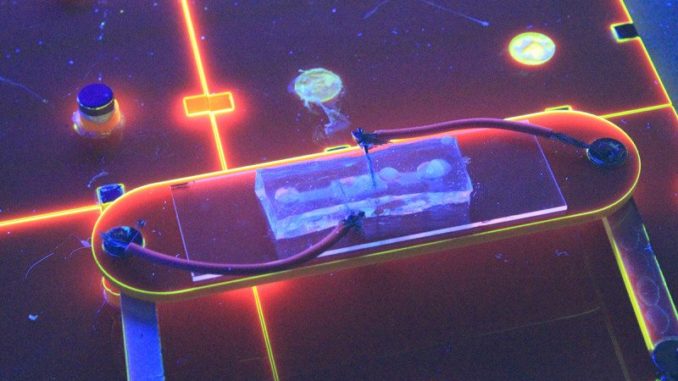
Lightbulb made of modified E. coli fuses biology and electronics
It could soon be possible to make a light source out of bacteria.
So says a group of students from Newcastle University in the UK who are attempting to combine electronic engineering and synthetic biology to create “electro-biological” circuits.
The students have turned genetically modified, glowing E.coli into something analogous to a light bulb. The bulb is meant to switch on when the bacteria experience heat stress from a miniature microbial fuel cell – a device that acts as a battery by harnessing electrical energy from the action of microbes.
The project will debut in Boston this week at the International Genetically Engineered Machine competition (iGEM), an annual global competition that ends in a synthetic biology science fair called the Giant Jamboree. The eight-person team from Newcastle is just one of 300 teams from 40 countries.
To make their device, the Newcastle team designed E.coli that, due to the increased expression of a fluorescent gene, would glow when introduced to an electrical current or a heat source at 42 °C. They also designed a circuit to connect the bulb and the power source in the hopes of creating a kit that can snap together as easily as a Lego set.







Leave a Reply